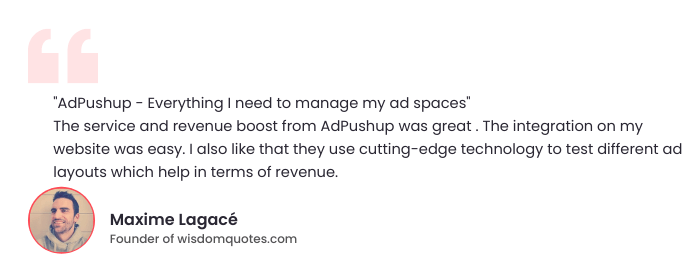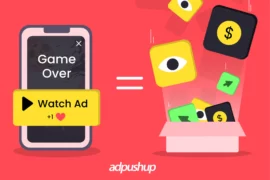Creating video ads that converts is a crucial skill in today’s content-dominated world. Learn how to create video ads with high conversion rates.
The sentence ‘Content is King’ is the most truthful phrase of all time. Today, the entire digital world is full of content in various forms. In those, marketing via the use of video advertising is one of the most preferred ad engagement strategies.
There have been days when I suffered with lustreless results after struggling to create the perfect content piece. But with videos, it is easy to dodge that bullet as it simplifies the like and trust factors associated with marketing.
Many video formats are available today, so how can we choose the correct format?
What type of videos convert the most?
The type of video we create depends on the agenda of the product. If the product or service is new to the market, then an amateur video is enough to grab the attention. If it’s a financial product, then the video should install trust and security within the customers.
But irrespective of the genre, storytelling and visual appeal should be at the forefront of any marketing strategy, and videos simplify this process. Also, it is essential to include less text as platforms like Facebook show negative conversion rates in such cases. Here are a few factors that will come in handy when we create a video ad.
Read more:
IABs Video Ad Standards: Everything You Need to Know
How Publishers can Transition From All-display to Video Ads
What are the Factors to consider before making a video ad that converts?
- Choose the advertisement concept
Before choosing the video ad concept, it is essential to have answers to the following four questions.
I. What is the priority in the video? Professionalism or Attractiveness?
II. What is the problem we are trying to solve?
III. How familiar is the issue among the audience?
IV. Is the product unique or an already existing idea?
The first marketing principle states, “Lead with value, build a relationship, then start pitching.” Coming up with a concept to create a video ad will help meet this objective and give us a positive headstart in the video content creation process. - Planning the scenes
Planning the scene and writing the video script depends a lot on the perspective of the video. It is wise to make the buyer the main character of our concept as they are the hero. Creating scenes that help users connect is crucial. That is where the 4R’s rule comes into the picture.
- Follow the 4R’s rule
The 4R’s stand for Relate, Rile, Reveal, and Release.
The idea must be so that the customer can relate to it. For example, suppose our advertisement prioritizes the harmful effects of polluted water; connecting it to contaminated drinking water and its adverse health effects will instill a fear in the customer that makes it relatable.
After establishing this connection, it is time to rile them up by using the emotional piece in the content. In the above example, ‘the health deterioration’ can act as an emotional rattler. Now, it’s time to reveal the solution to the problem.
The answer can be an idea or a developed product. Finally, we Release the buyers’ minds from worry by showing how the product or service will help solve the issue. - Taking advantage of stock images
The free stock images online have HD clips that help accentuate the quality of our video. Therefore using them to our advantage is a step in the right direction. In addition, paid alternatives help us customize the clips based on our necessities and goals.
- Customizing content by personally filming it
Customized content always gives us an upper hand, enabling flexibility in our storytelling style. Not just that, but personal filming can help induce a sense of authenticity to the video that appeals to the target audience. Using simple and elegant lighting makes the video attractive and professional.
- Editor to enhance the effect
Today there are a lot of video editors available online. However, we might need the best editing tools to create a video ad. Adding the necessary transitions, color grading, audio, and special effects will take the video from amateur to experienced. The below workflow pattern will help in this scenario.
Eliminate: Cut out the unnecessary parts of the video to avoid boredom and delays.
Edit: Edit the video to create a natural flow between the scenes.
Combine: Combine the introductory video with graphics to improve the visual appeal.
Color: Change the coloring to make the video more eye-catching
Lighting: Lighting helps convert a beginner-friendly video to a professional content piece.
Delivery: Finally, render the project, export the video, and post the advertisement online.
Read more:
What are Outstream Video Ads?
What are In-Banner Video Ads? - The AIDA Breakdown
Attention, Interest, Desire, and Action are the four fundamental aspects of a video advertisement. It is similar to the 4R Schema but is proven more influential among the Genz audience.
Attention
Attention helps give a sense of promise to the users. By capturing their attention using the video, we are making a virtual promise to provide the solution for the problem at hand.
Interest
Interest is where we connect with the analytical mind of the users. We provide proof and project authenticity.
Desire
We induce a desire in their mind by highlighting our product, service, or idea’s positive aspects. We intensify this desire by pointing out the uniqueness of the product.
Action
Finally, we take all the desire in the user’s mind and channel it into acting on our offer that will nudge the customers to make a purchase. - Including Proofs
Real-time proofs install trust among the viewers, so it is wise to consider including user testimonials, research lab results, User reviews, and Star badge schemas to improve the chances of conversion, no matter if you run acquisition campaigns on Google or sell on Instagram.
User-generated content and social proof can go a long way in persuading people not only to interact with your brand but to actually convert. User reviews have a more significant influence as people tend to believe personal experiences over promotional mayhem. Star badges trigger a visual preference.
Lab results provide concrete scientific proof, which installs a sense of security. Making sure the reviews are not too overpowering is necessary. Including some bad reviews will make it more natural and less artificial.
Using the above strategies, one can easily create a video adthat can convert into sales. Keeping an eye out for changes in the Google algorithm and user interest will help optimize the process.
Read more:
Rewarded Video Ads: 6 Essential Practices for 2022
How to Run Video Ads in Google Ad Manager (GAM)
In Closing
Now that we understand the different aspects of creating a video ad that can convert into a potential lead, it is time to use these tips and tricks in real-time. Video content can improve brand visibility exponentially. But it isn’t easy to make it possible without the right tools and techniques.
Investing in a good video editor will make this process simpler. By incorporating different features, the editor has, we can amplify the visual appeal by attracting the audience’s attention.

FAQs
To make an effective Video Ad-
i. Don’t let the first few seconds pass you by. You need a good start.
ii. Make your brand stand out by highlighting its strengths.
iii. Timing your video. Adverts should not be turned into documentaries.
iv. Give viewers a reason to care.
v. Use a Call to Action.
The most successful types of Conversion Ads are-
i. Conversions from leads. The goal of lead conversions is to identify potential customers and advance the relationship.
ii. Conversions from clicks.
iii. Conversions from video views.
iv. Conversions from purchase to sale.
Storytelling is the most important aspect of any video. Creating a storytelling arc from the first frame to the last that keeps your audience interested along the way is what Facebook also recommends for video ads.

Shubham is a digital marketer with rich experience working in the advertisement technology industry. He has vast experience in the programmatic industry, driving business strategy and scaling functions including but not limited to growth and marketing, Operations, process optimization, and Sales.







